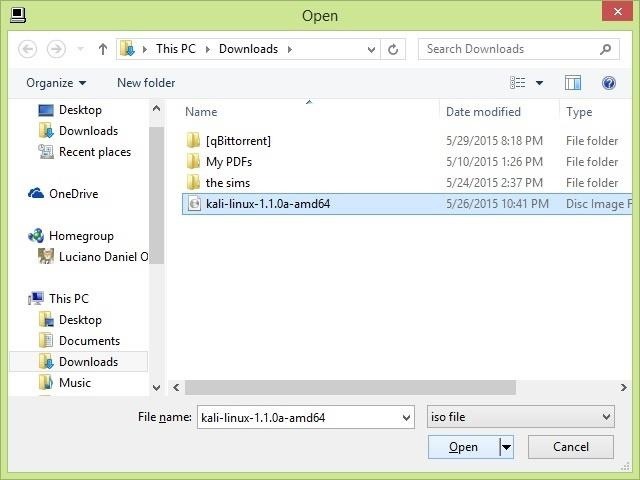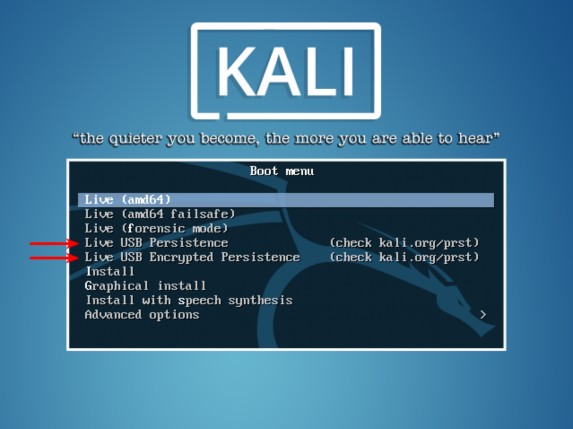

- #HOW TO ENABLE PERSISTANCE ON A KALI LINUX USB HOW TO#
- #HOW TO ENABLE PERSISTANCE ON A KALI LINUX USB UPDATE#
- #HOW TO ENABLE PERSISTANCE ON A KALI LINUX USB PASSWORD#
If necessary, you should change it according to your own.
#HOW TO ENABLE PERSISTANCE ON A KALI LINUX USB PASSWORD#
During boot, you’ll be asked to unlock your encrypted persistence partition with the password you entered above. We write the following commands via /dev/sdb3. Reboot the machine (or another machine) with the USB device inserted, and from the Kali boot menu choose Live System (Encrypted Persistence). If you remember the capacity of the ext4 formatted partition you created while partitioning, it will be easier to find it from the table displayed on the fdisk -l command.Īt the same time, as there will be a total of three partitions in the USB, it will immediately catch your eye on the table. Setting this to 0 disables persistent storage, and setting it to any value larger than 0 enables persistent storage. From here, we need to find the ext4 formatted partition in the USB. So those connected to /dev /sda point are your current hard drive. To create a persistent storage live USB of Debian or Ubuntu using Rufus 3.7 or newer, select the ISO and a new Persistent partition size option will show up, with a slider that allows setting the persistent partition size. You will see the discs connected in the text on the screen.

Open the terminal and enter the command fdisk -l. If it asks for a password at startup, enter the username “ root” and the password “ toor“. Generally, with the f12 key, the Boot settings are entered. Select the option that says “ Live USB Persistence” from the menu that appears. Note: You can find out how the USB Boot settings are done by searching on your computer model.

#HOW TO ENABLE PERSISTANCE ON A KALI LINUX USB HOW TO#
How To Install Kali Linux 2020.2 On USB Kali Linux 2020.2 USB Persistence Kali. Thanks to tools such as Win32 Disk Imager, we can create a bootable Live USB drive of a vast majority of Linux distributions, including Kali.
#HOW TO ENABLE PERSISTANCE ON A KALI LINUX USB UPDATE#
At the opening, you will see Kali’s bootloader. How To Install Kali Linux 2020.2 On USB Kali Linux 2020.2 USB Persistence Kali Live Persistence - YouTube. Having a Kali Linux USB drive provides us with the ability to persistently save system settings and permanently update and install new software packages onto the USB device, allowing us to carry our own personalized Kali Linux, with us at all times. apply pending operationĪfter the process is done, plug in the USB and boot your computer from the USB. The duration of this process may vary depending on the size. Just download the latest version of Kali Linux ISO file from the official website.Use PowerISO or Rufus or any other tool and make a bootable USB image with any tool.Now plug your usb and restart your laptop or PC and make sure that USB storage is your first bootable device else press F12 when powering on your machine and select the usb device to boot.


 0 kommentar(er)
0 kommentar(er)
